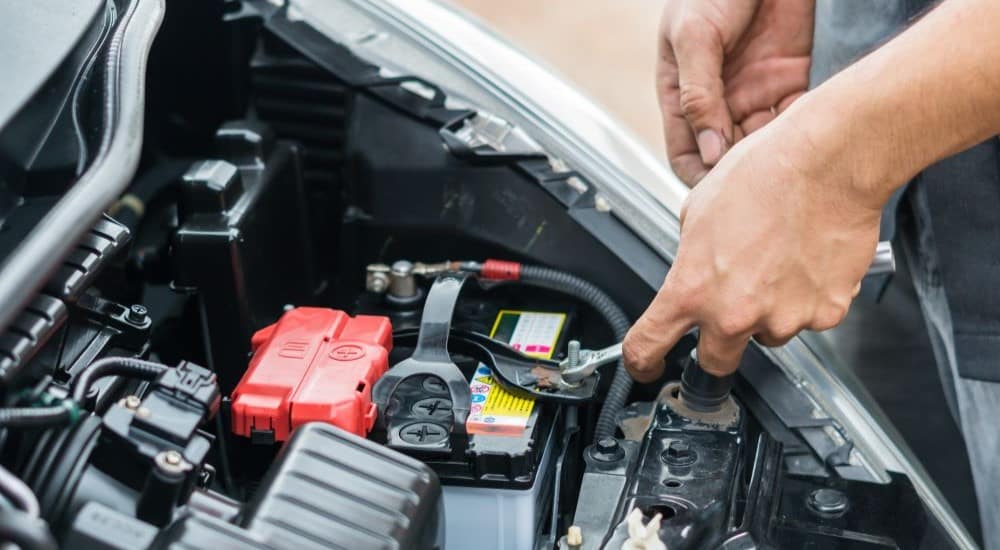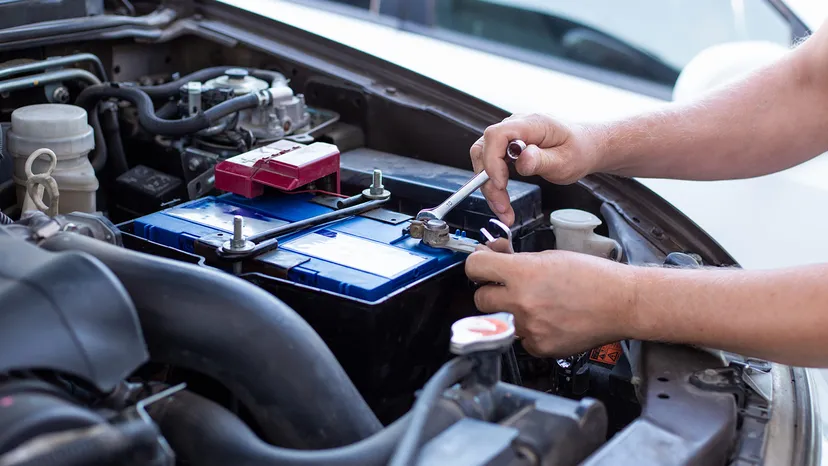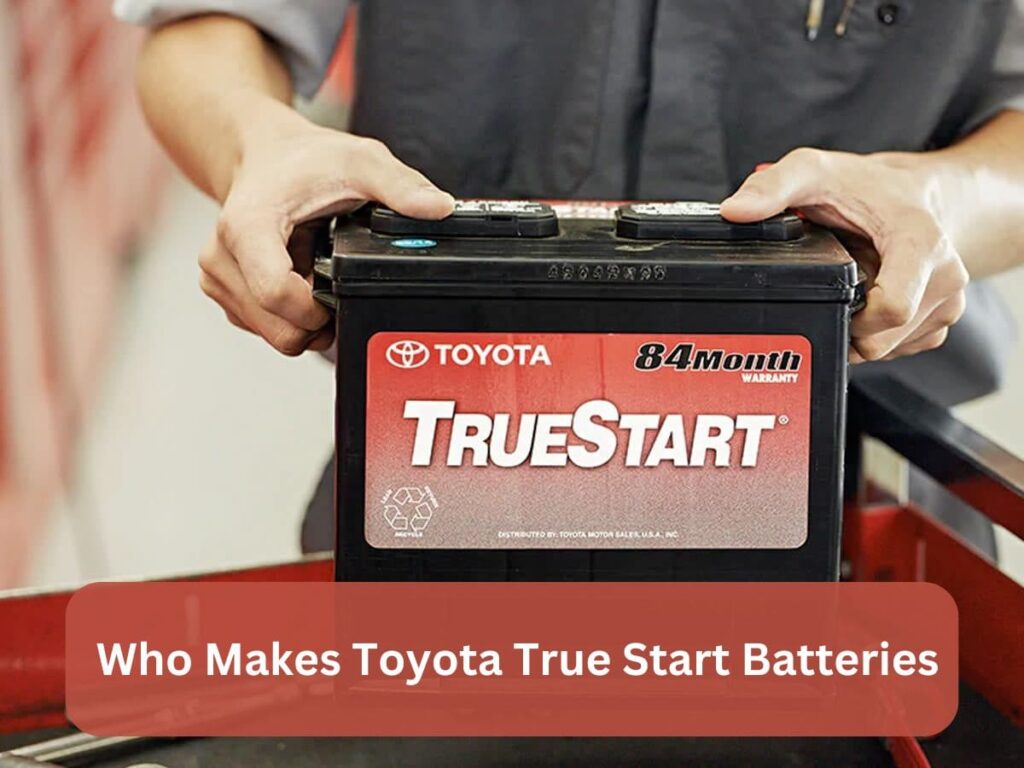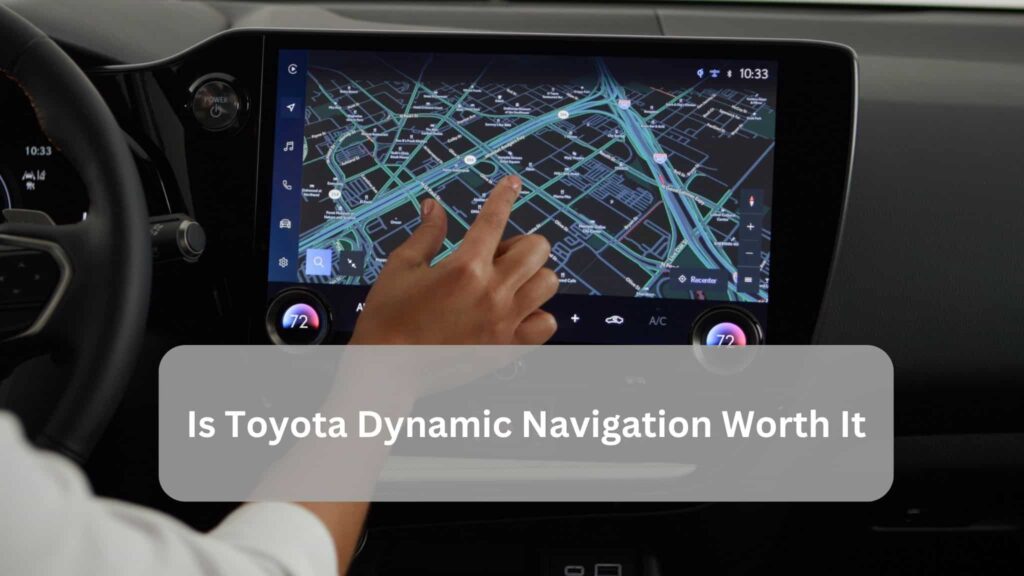Have you ever wondered who makes Toyota True Start batteries and why they’re the top choice for Toyota vehicles? These batteries are built with reliability and power and are specially designed to keep Toyotas running smoothly. With quality manufacturing at the core, True Start batteries provide lasting performance, even in harsh weather.
Clarios makes Toyota True Start batteries. They’re a big company that used to be called Johnson Controls. They make lots of car batteries for all kinds of cars including Toyota, Lexus, and Scion.
In this article, we’ll explore the makers behind Toyota True Start batteries so you can better understand what keeps your Toyota powered up.
What Are Toyota True Start Batteries?
Toyota True Start batteries are high-quality car batteries made especially for Toyota vehicles. They are designed to meet Toyota’s standards, which means they last a long time, work well in challenging weather, and fit perfectly into Toyota cars and trucks.
True Start batteries are available only at Toyota dealerships and accepted parts stores, so drivers know they’re getting a battery made just for their car.
Types of Toyota True Start Batteries:
Toyota True Start batteries are designed specifically for Toyota vehicles, making them reliable and long-lasting. However, not all TrueStart batteries are the same! There are different types made for various Toyota models and driving needs. Here’s a breakdown of the kinds of Toyota TrueStart batteries to help you find the best one for your car.
1. Toyota True Start Flooded Lead-Acid Batteries:
The most common True Start battery is a flooded lead-acid type. These batteries are affordable, reliable, and meet Toyota’s high standards. They’re made to work in most Toyota vehicles, providing good power and performance for daily driving. While they might need occasional maintenance, like checking fluid levels, they’re great for many drivers.
Best For: Regular Toyota models with basic features.
Benefits: Affordable, good performance for everyday use, solid power for typical driving.
2. Toyota True Start AGM (Absorbed Glass Mat) Batteries:
AGM batteries are more advanced than flooded lead-acid batteries and offer better performance, especially for vehicles with more electronics or in demanding climates. They use a unique glass mat design that holds the battery acid in place, making them spill-proof and better at handling bumps and vibrations. If you have a Toyota with high-tech features or drive in hot or cold climates, an AGM True Start battery is a strong choice.
Best For: Newer Toyota models with advanced electronics, off-road driving, or extreme weather areas.
Benefits: Spill-proof, longer life, suitable for extreme temperatures and rough roads.
3. Toyota True Start Enhanced Flooded Batteries (EFB):
Enhanced Flooded Batteries (EFB) are a step up from regular flooded batteries. They’re designed to handle more frequent starts and stops, making them perfect for vehicles with start-stop systems, which shut off the engine when you’re stopped and restart it when you press the gas. EFB TrueStart batteries provide more power and recharge faster, so they’re a great choice if you do a lot of city driving or have a newer Toyota with a start-stop feature.
Best For: Toyota vehicles with start-stop technology and frequent city driving.
Benefits: Quick recharge, more durable with frequent stops and starts, longer-lasting than standard flooded batteries.
4. Toyota True-2 Batteries:
While not the same as True Start, Toyota True-2 batteries are another reliable choice for Toyota owners. True-2 batteries are more budget-friendly and provide power for older Toyota models. Although they don’t have a warranty as long as True Start batteries, they’re still manufactured by Toyota’s quality standards.
Best For Older Toyota models and drivers looking for a budget-friendly option.
Benefits: Affordable, dependable for basic driving needs.
Installation Process for Toyota True Start Batteries:

Before You Start:
- Safety First! Always disconnect the negative cable first to avoid electrical shocks. Remember, batteries contain acid, so wear gloves and eye protection.
- Gather Your Tools: You’ll need a screwdriver (usually 10mm), a socket set, and some elbow grease!
Let’s Get Started:
- Pop the Hood: Locate your battery. It’s usually a black box with red and black cables attached, hiding under the hood.
- Disconnect the Negative Cable: This is the black one with a “-” symbol. Loosen the nut with your wrench and carefully wiggle the cable off the battery terminal.
- Disconnect the Positive Cable: Do the same with the red cable marked “+.”
- Remove the Hold-Down Clamp: A clamp or bracket usually holds the battery in place. Unscrew it and set it aside.
- Lift Out the Old Battery: Carefully lift the old battery from its tray. It might be heavier than you expect!
- Clean the Terminals: If the battery terminals have corrosion (that white, powdery stuff), clean it off with a wire brush or baking soda and water solution.
- Place the New Battery: Place your new True Start battery in the tray and verify that the terminals are in the same position as the old one.
- Reconnect the Positive Cable: This time, connect the red “+” cable first, tightening the nut securely.
- Reconnect the Negative Cable: Connect the black “-” cable and tighten it.
- Secure the Hold-Down Clamp: Put it back in place and tighten it to secure the battery.
- Close the Hood: Give yourself a pat on the back – you did it!
Important Notes:
- Double-Check Your Work: Make sure all connections are tight and there are no loose wires.
- Dispose of the Old Battery Properly: Don’t just toss it in the trash! Take it to an auto parts store or recycling centre.
- If in Doubt, Ask for Help: If you’re uncomfortable doing this yourself, it’s always best to have a professional install the battery.
You can install your new Toyota True Start battery like a pro with these simple steps.
When should I replace my battery?

It’s always best to replace your battery before it completely dies. That way, you’re less likely to get stuck with a car that won’t start. If your vehicle shows any of these signs and your battery is around 3-5 years old, it’s a good idea to consider getting a new one.
1. Slow Engine Start: If your car starts slower than usual when you turn the key, it’s a common sign that your battery is losing power. A healthy battery always provides a quick, strong start, but it struggles to do this as it wears out.
2. Dashboard Warning Light: Some cars have a battery warning light on the dashboard. If this light stays on after the vehicle starts, it’s a good idea to have your battery checked by a mechanic.
3. Electrical Problems: Dim headlights, slower-moving windows, or issues with your radio are signs that the battery isn’t supplying enough power. Batteries support your car’s electrical functions, so weak performance is often linked to ageing batteries.
4. Needing a Jump-Start More Than Once: If your car has required jump-starting more than once recently, it’s likely time for a replacement. While a single jump-start could be due to lights left on, repeated jump-starts are a clear sign the battery is no longer holding a charge well.
5. Old Age: Even if you don’t notice any problems, consider replacing your battery if it’s 4-5 years old. Most batteries lose performance over time, even if they don’t show immediate signs.
Tips for Extending Battery Life:
Your car battery is super important! It gives power to everything in your car, like the engine, lights, and radio.. While most car batteries last 3-5 years, you can make yours last longer by following these simple tips. Here’s how to extend your battery life:
1. Drive Regularly:
- Short drives don’t allow your battery to recharge, which can drain it faster. Try to drive your car at least once a week for 15-20 minutes, especially if you don’t use it daily. This gives the battery time to recharge fully and stay healthy.
2. Turn Off Electronics When the Engine’s Off:
- Leaving your lights, radio, or phone charger on when the engine isn’t running drains your battery quickly. Always double-check that everything is off before leaving your car, especially overhead lights, which are easy to miss.
3. Avoid Extreme Temperatures:
- Extreme heat and cold can stress your battery, causing it to wear out faster. In hot weather, park in a garage or shaded area, and consider an engine block heater in freezing temperatures. These steps can help your battery stay at a stable temperature and work better over time.
4. Keep the Battery Terminals Clean:
- Corrosion (a whitish buildup) on battery terminals blocks the power flow and makes it harder for your battery to work. Clean the terminals regularly using a mixture of baking soda and water with a small brush. This can improve power flow and help your battery last longer.
5. Limit Short Trips:
- Each time you start your car, the battery loses some power. Short trips don’t give it enough time to recharge, so try combining errands into one more extended trip when possible. This will let your battery charge up fully, making it more vital in the long run.
6. Secure Your Battery:
- Ensure your battery is securely fastened in place. A loose battery can vibrate and get damaged, especially on bumpy roads. Regularly check the battery’s mounting brackets to keep it secure and safe from unnecessary wear.
7. Test Your Battery Regularly:
- Ask a mechanic to test your battery at regular checkups, especially as it ages. A simple test can tell if the battery’s charge is still strong or might need replacing soon. This way, you can replace it before it leaves you stranded.
Who is Toyota’s battery supplier?
Panasonic, a global leader in battery technology, is Toyota’s primary battery supplier. Toyota and Panasonic have worked together for years, forming a strong partnership to produce high-quality batteries for Toyota’s electric and hybrid vehicles.
Recently, Toyota also started working with other suppliers, like CATL and BYD, to help meet the growing demand for electric cars worldwide. By teaming up with multiple suppliers, Toyota can ensure they have enough batteries and can use the latest technology.
FAQ’s:
1. Who manufactures True Start batteries?
True Start batteries are manufactured by Clarios, a well-known company that makes reliable, high-quality batteries for Toyota and other brands.
2. Can True Start batteries be used in non-Toyota vehicles?
Yes, True Start batteries can be used in non-Toyota vehicles if they match the car’s battery size and power requirements.
3. How does the warranty work for Toyota True Start batteries?
The Toyota True Start battery warranty covers replacement for 24 months and offers prorated coverage for up to 84 months after purchase.
4. Are True Start batteries suitable for all Toyota models?
Yes, True Start batteries are designed to fit most Toyota models, offering reliable performance and a proper fit for various Toyota vehicles.
Conclusion:
Toyota True Start batteries, made by Clarios (formerly Johnson Controls), are essential for reliable Toyota performance. They come in various types to suit different models and driving needs. Proper installation, timely replacement, and good maintenance practices can extend battery life. Remember, Toyota partners with top battery suppliers like Panasonic, CATL, and BYD to ensure high quality and meet the growing demand for electric vehicles.



